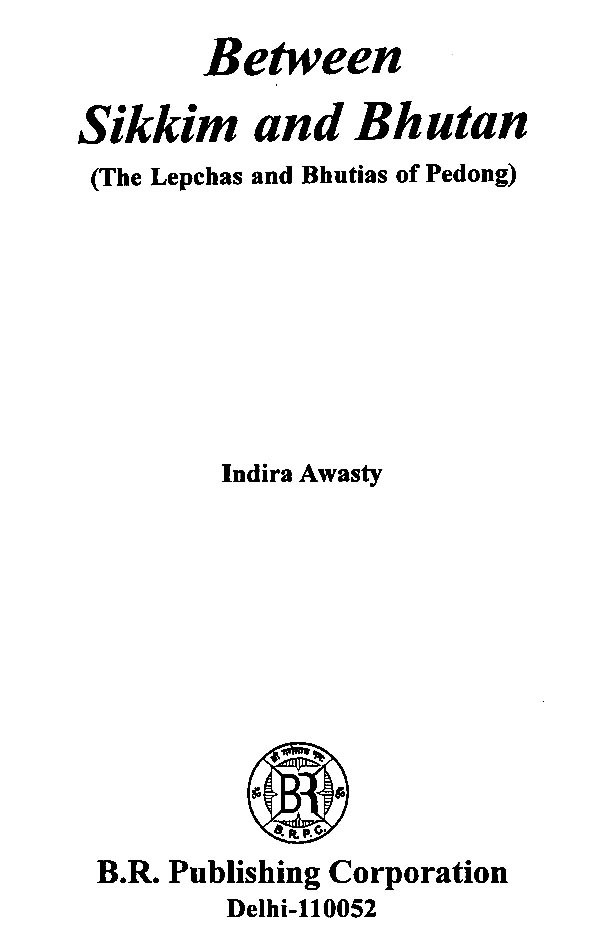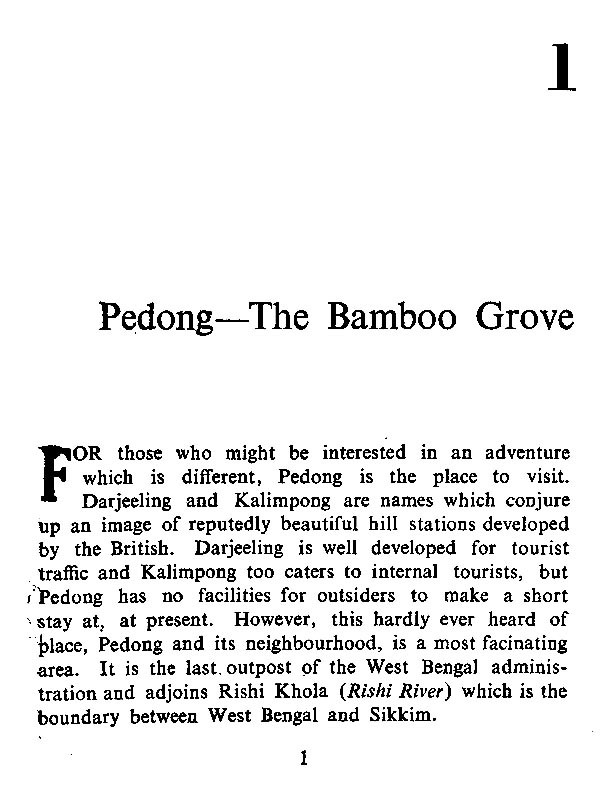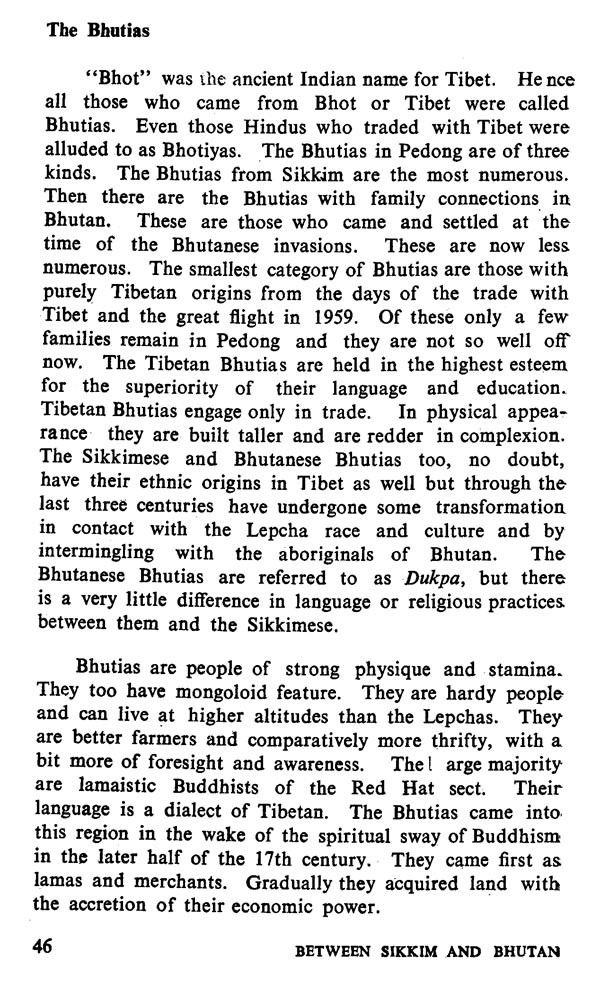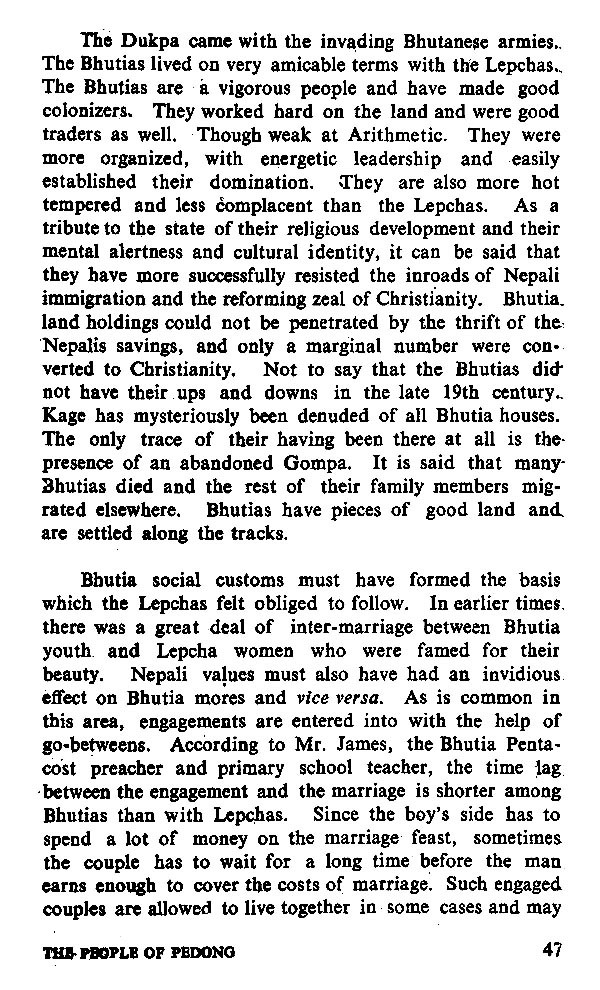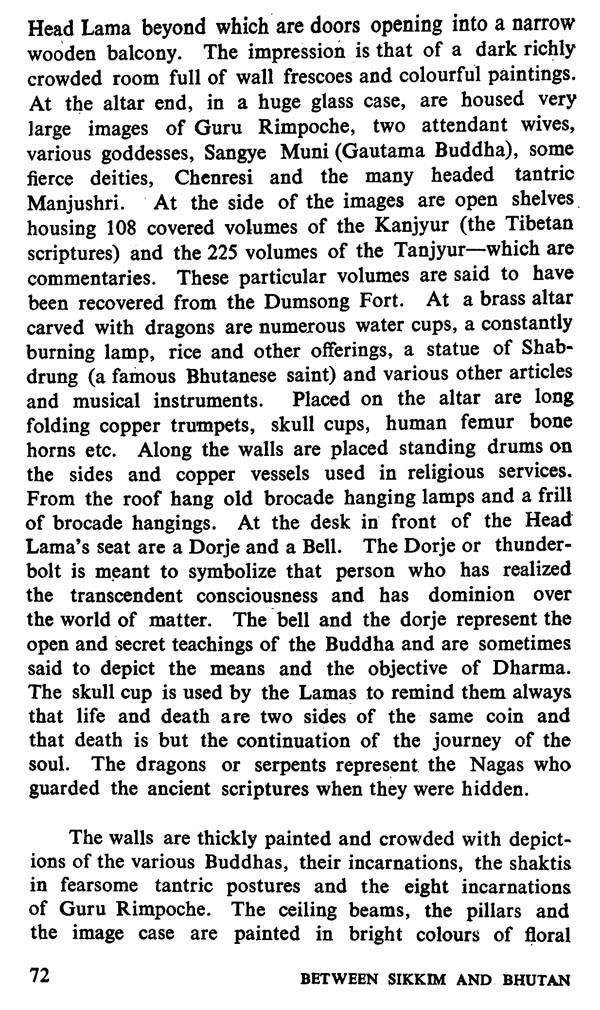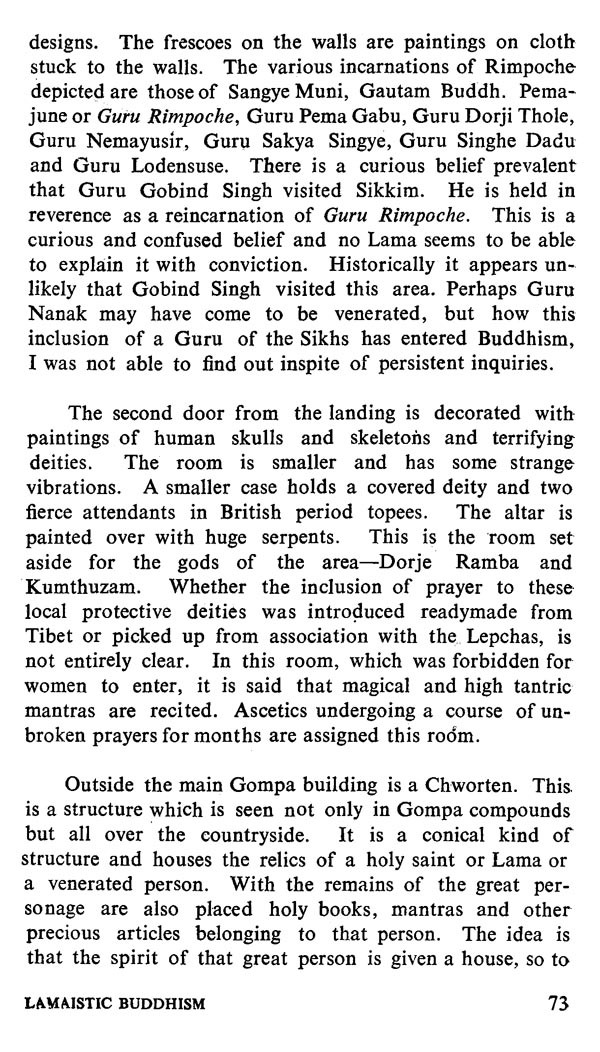
Between Sikkim and Bhutan- The Lepchas and Bhutias of Pedong
Book Specification
| Item Code: | AZE549 |
| Author: | Indira Awasty |
| Publisher: | B.R. Publishing Corporation |
| Language: | ENGLISH |
| Edition: | 2013 |
| ISBN: | 9789350501054 |
| Pages: | 136 |
| Cover: | HARDCOVER |
| Other Details | 9.00x6.00 |
| Weight | 290 gm |
Book Description
I was most impressed with the breath-taking loveliness of nature in this area, coupled with extremely difficult terrain. As first I felt that lamaistic Buddhism was a sort of degenerated form of a highly superstitious religion. practiced blindly by unknowing people. But as time clasped. I too was drawn imperceptibly to recognize the 'power' of this religion. I felt the vibrations and strange presences in the leech infested dark, dense, damp, gloomy forests. The silences were weird but strangely exhilarating. I never felt terror or fright but I felt drawn compulsively to the toneless droning of the drums and chants echoing from remote houses on hill sides. I said to myself, this area and these people have rightly and aptly chosen a form of religion to suit their proximity to whatever form the primeval essence takes.
In Pedong, nature can be at its harshest and most beautiful. I felt that if a human being could be close to God or to the source of creation or to some other world force, it was here. I felt that by piercing a veil that eluded me all the time, something would be seen or experienced. The look of patience and timelessness on the faces of the inhabitants, the 'living' yet more or less abandoned Gompas and the light emanating from behind the dull eyes of the locals, made me feel that, if it were at all possible to be at peace with the world, it was here. If I settled here, would I be buried alive? I do not think so. It is like the end of the earth, but it is puls ating. The communications are of another dimension.
I have tried to write about the legends, customs; religion, history and the present state of the people of Pedong and the surrounding areas. There are conflicting views on the strategy to be adopted in regard to the development of backward areas, hilly tracts and primitive agricultural communities.
**Contents and Sample Pages**
